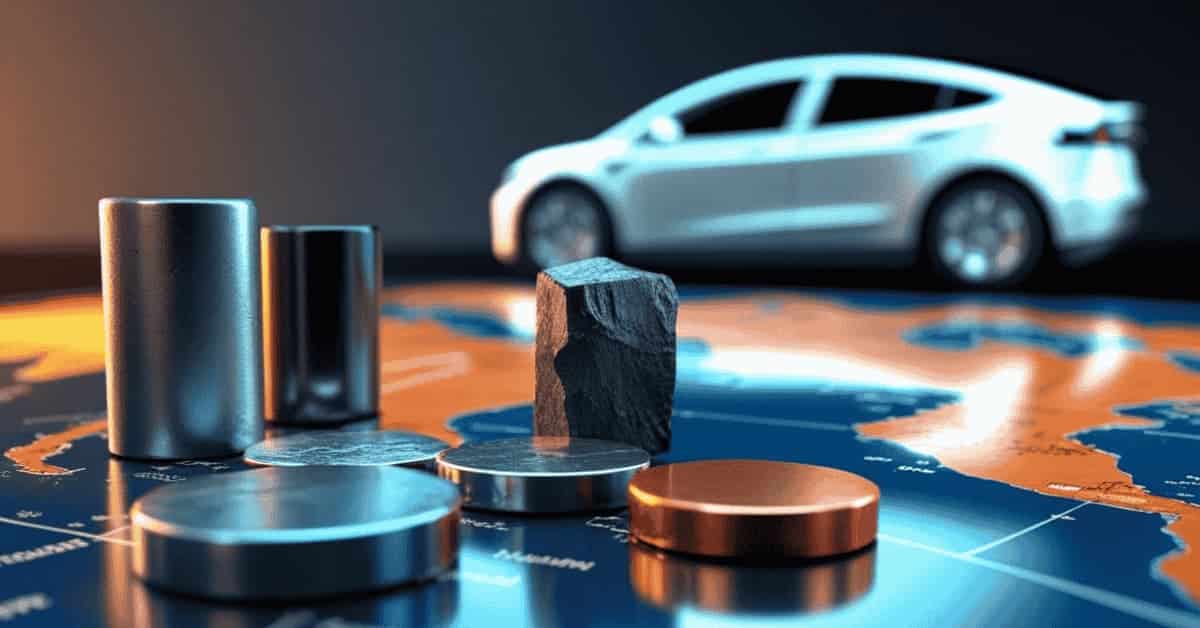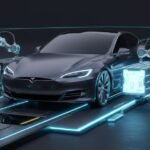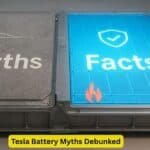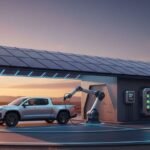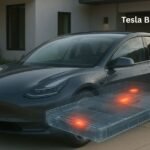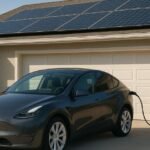The heart of a modern EV battery is a complex mix of critical minerals, including lithium, cobalt, nickel, and manganese. The global supply and demand for these materials are more than just a business issue; they are a major geopolitical and economic challenge. As the world races to electrify, the demand for these minerals is growing much faster than the ability to mine them. This creates a tight market, high prices, and a new kind of global competition.
Why Lithium, Cobalt, Nickel, and Manganese Matter in EV Batteries
Each of these four metals plays a unique role in the performance, cost, and safety of EV batteries. Let’s explore how each contributes to the energy revolution.
1. Lithium
Lithium is the heart of every modern rechargeable battery. Known for its light weight and high energy density, lithium enables efficient charge and discharge cycles. It’s found in both hard-rock spodumene deposits and brine lakes across South America’s “Lithium Triangle” — Argentina, Bolivia, and Chile.
Global lithium demand is projected to rise fivefold by 2030, driven by EV production and renewable energy storage. However, extraction methods raise environmental concerns over water usage and land impact, prompting research into more sustainable mining and recycling technologies.
2. Cobalt
Cobalt provides stability to the cathode, reducing overheating risks and enhancing battery lifespan. However, over 70% of global cobalt originates from the Democratic Republic of Congo (DRC), where labor and ethical issues persist.
Due to these concerns, automakers are shifting toward low-cobalt or cobalt-free chemistries, such as LFP (Lithium Iron Phosphate) and NMC 811, which reduce dependency while maintaining energy density. Cobalt remains vital for high-performance EVs, but its dominance is gradually declining.
3. Nickel
Nickel improves energy density, allowing electric vehicles to travel longer distances per charge. The global nickel market is expanding rapidly, especially in Indonesia, which has become the largest producer and refiner after implementing a ban on raw ore exports.
High-nickel, low-cobalt batteries (like NCA and NMC 811) are becoming industry standards. Nickel’s role in enhancing range and performance makes it one of the most sought-after metals in the EV supply chain.
4. Manganese
Manganese improves battery stability and thermal management while lowering production costs. It’s widely available, with major suppliers including South Africa, Gabon, China, and Australia.
New chemistries such as LMFP (Lithium Manganese Iron Phosphate) are emerging, offering a balance of affordability, safety, and improved energy density — key for mass-market EVs.
The Supply Side: Where Do These Minerals Come From?
The global supply of EV battery materials is concentrated in a few regions, creating both opportunity and risk. Understanding the origins and challenges of each metal is essential for future energy security.
1. Lithium Supply: From Hard-Rock Mines to Brine Ponds
Most of the world’s lithium comes from two main sources: hard-rock mines and brine ponds.
a. Hard-Rock Mines
Australia is the world leader in hard-rock lithium mining. It digs up a mineral called spodumene, which is then processed into battery-grade lithium. In 2023, Australia produced more than 86,000 metric tons of lithium, making it the largest producer by a wide margin.
b. Brine Ponds
The “Lithium Triangle,” which includes Argentina, Bolivia, and Chile, holds the world’s largest lithium reserves. They use a process where lithium-rich brine is pumped from under the ground and left in large ponds to evaporate, leaving behind a lithium compound. This process is slower but can be cheaper in the long run.
2. Cobalt Supply: Ethical and Geopolitical Challenges
The supply of cobalt is perhaps the most concerning. A single country, the Democratic Republic of Congo (DRC), produces over 70% of the world’s cobalt. This reliance on one country creates a major risk, not just from a supply perspective, but also from a social and ethical one.
a. Ethical Concerns
Much of the cobalt from the DRC is mined using poor labor practices, including child labor. This has pushed automakers to look for ways to reduce or eliminate cobalt from their batteries.
3. Nickel Supply: Indonesia’s Rapid Rise
Indonesia has recently become the world’s top nickel producer.
a. Indonesia’s Rise
In 2023, Indonesia produced over 1.7 million tons of nickel. The country’s government has invested heavily in nickel processing, and it has a huge supply of a type of nickel ore called laterite. This makes Indonesia a key player in the global battery supply chain.
b. Other Players
Australia, Russia, and Canada are also major nickel producers, but Indonesia’s rapid growth has changed the market.
4. Manganese Supply: A Stable but Overlooked Resource
Unlike the other three minerals, the supply of manganese is more spread out.
a. Leading Producers
South Africa is the world’s largest producer of manganese, followed by Gabon, Australia, and China. This wider distribution of supply makes manganese a less risky mineral for the global market.
Rising Demand for Battery Minerals in the EV Market
The exponential rise of electric vehicles has transformed the demand landscape for critical minerals.
1. Projected Demand Growth by 2030
According to the International Energy Agency (IEA):
- Lithium demand: +500%
- Nickel demand: +300%
- Cobalt demand: +200%
- Manganese demand: +150%
With global EV sales expected to exceed 60 million units by 2030, demand for these minerals will continue to soar.
2. Price Volatility and Supply Shortages
The rapid rise in demand has triggered price volatility across global markets.
- Lithium prices surged nearly 400% in 2022 before stabilizing.
- Cobalt and nickel markets face instability due to geopolitical risks and logistical disruptions.
Automakers are responding by locking long-term contracts and investing directly in mining companies to secure supply.
Geopolitical Challenges in the EV Battery Supply Chain
The EV battery supply chain is more than a business problem; it’s a matter of national security. China has a massive lead in this area, which worries countries in the U.S. and Europe.
- China’s Dominance: While China is a major producer of all these minerals, its real power is in the processing and refining stage. China controls over 65% of the world’s lithium refining and has a major hold on the refining of cobalt and nickel. This means that even if a country mines a mineral, it often has to send it to China to be processed into a usable battery material.
- The U.S. and Europe’s Response: Countries are now trying to build their own independent supply chains. The U.S. Inflation Reduction Act (IRA), for example, gives tax credits to EV buyers, but only if the battery is made with minerals that are mined and processed in the U.S. or a country that has a free trade agreement with it. This is a clear move to reduce reliance on countries like China.
Building a Sustainable Future for EV Battery Materials
The challenges are real, but so are the solutions. The industry is working on a number of ways to make the EV battery supply chain more resilient and sustainable.
1. Recycling and Circular Economy
The best way to reduce the need for new mining is to recycle old batteries.
- The Second-Life Battery: An EV battery can still be useful even after its power drops. It can be used for energy storage for a home or a power grid. This extends the life of the battery and delays the need for new mining.
- “Urban Mining”: When a battery can no longer be used, its materials can be recovered. Companies like Redwood Materials are building huge recycling plants to recover up to 95% of the lithium, cobalt, nickel, and manganese from old batteries. This is a crucial step towards a circular economy.
2. New Battery Chemistries
Scientists are also working on new battery designs that use less of the risky or expensive minerals.
- LFP Batteries: Lithium Iron Phosphate (LFP) batteries are a good example. They use iron and phosphorus instead of cobalt and nickel. While they have a lower energy density and shorter range, they are safer, cheaper to make, and less dependent on a risky supply chain. Many companies are now using LFP batteries for their standard range EVs.
- Manganese-Rich Batteries: New battery designs, such as Lithium Manganese Iron Phosphate (LMFP), are using more manganese to replace some of the nickel and cobalt. This makes the battery more affordable and relies on a more stable supply chain.
Case Study: Indonesia’s Nickel Strategy
Indonesia’s rise as a nickel powerhouse is a great example of how a country can use its natural resources to gain a strategic advantage. For decades, Indonesia simply exported its nickel ore. But the government saw an opportunity to get more value from its resource. They banned the export of raw nickel ore and instead required companies to process the ore in Indonesia. This move has led to a massive influx of investment, mainly from Chinese companies, and has made Indonesia a central player in the global battery supply chain.
“The rules of the game have changed,” an industry analyst recently told me. “In the past, mining was a commodity business. Now, it is a key part of the technology supply chain, and countries are treating it as such.”
Practical Advice for Businesses and Investors
- For Businesses: You must have a strong supply chain strategy. Diversify your suppliers to reduce risk. Invest in recycling and new battery technologies that use less of the most volatile minerals.
- For Investors: Look for companies that are positioned to benefit from this shift. This includes not just mining companies, but also battery recycling companies and companies that are developing new battery chemistries.
FAQs
Are there enough of these minerals to meet demand?
Experts agree that there are enough reserves of these minerals in the ground. The real challenge is the speed at which we can mine and refine them to meet the explosive growth in demand.
Is it possible to make an EV battery without cobalt?
Yes. Many companies are now using cobalt-free battery chemistries like LFP (Lithium Iron Phosphate). These batteries are already used in many standard-range EVs and are a major trend in the industry.
What is the biggest risk in the EV battery supply chain?
The biggest risk is the high concentration of mining and refining in just a few countries. This creates a risk of supply disruption due to political issues, economic conflict, or natural disasters.
Will recycling solve the supply problem?
Recycling will be a key part of the solution, especially after 2030, when many first-generation EV batteries begin to reach their end of life. However, it will not be enough on its own. New mining and refining will still be needed to meet the growing demand for new EVs.
Conclusion
The global EV transition depends on securing reliable, ethical, and sustainable sources of lithium, cobalt, nickel, and manganese. These materials form the foundation of the clean energy revolution.
To build a resilient future, industries must invest in recycling technologies, new battery chemistries, and geopolitically balanced supply chains. The nations and companies that act now will define the next decade of the EV and energy storage market.
